Marvel's Midnight Suns review: Superb superhero strategy

The all-out chaos of a super-powered brawl has always led the superhero genre to action-oriented video games. Button mashing, ability spamming, and all-around roughhousing tend to be what’s on the menu, with mixed results. On one end of the spectrum, you get something great like the Arkham games; on the other, you get something dull like 2020’s Marvel’s Avengers.
This might be why Marvel’s Midnight Suns took a look at this formula and decided to throw it in the garbage, instead moving into squad-based tactics, made by the same studio that produced the incredible XCOM games. This was a smart move. The strategy genre is a brilliant fit for our marvelous friends, and a lot of care and attention has gone into making turn-based tactics fit superheroes.
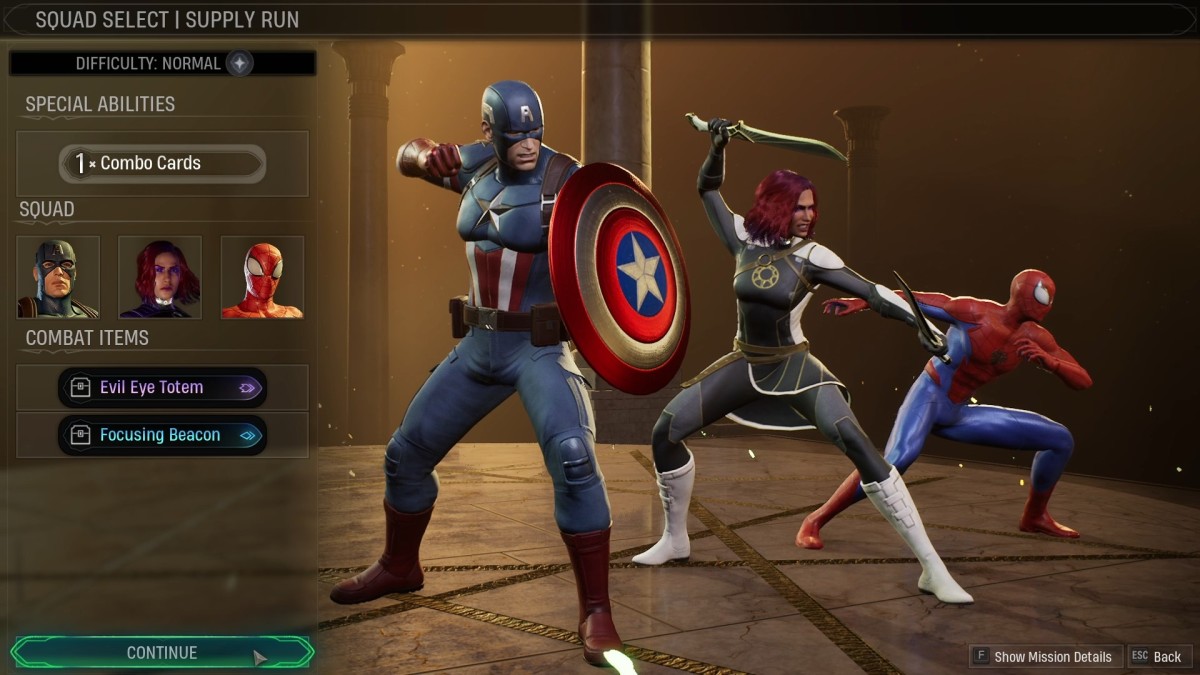
When you’re putting a squad together in XCOM, you have full control and customization over how your units function. They’re blank-slate soldiers that you can mold however you like, and if they die, it doesn’t really matter in terms of the narrative (even if it does matter in your heart). You can’t do that here, though. These are fully-formed characters with established personalities, and it wouldn’t make sense if Tony Stark unceremoniously kicked the bucket halfway through.
To solve this, the game gives each hero a much more defined gameplay purpose. Each hero gets their own deck of cards – eight abilities in total – that you can customize, and then when you select your heroes to take on a mission, their decks get shuffled together. It’s a simple solution, but it allows each hero to have appropriately themed abilities.
You have Spider-Man, who can quickly zip around the battlefield while dealing scratch damage and taking out weaker enemies. Then there’s the tanky Captain America, who uses his shield to build up as much block as possible before getting every enemy on the field to target him, keeping his allies safe. Or you can use Doctor Strange, who lacks many damage-dealing abilities but can manipulate the battlefield and set the other heroes up for success in future turns.
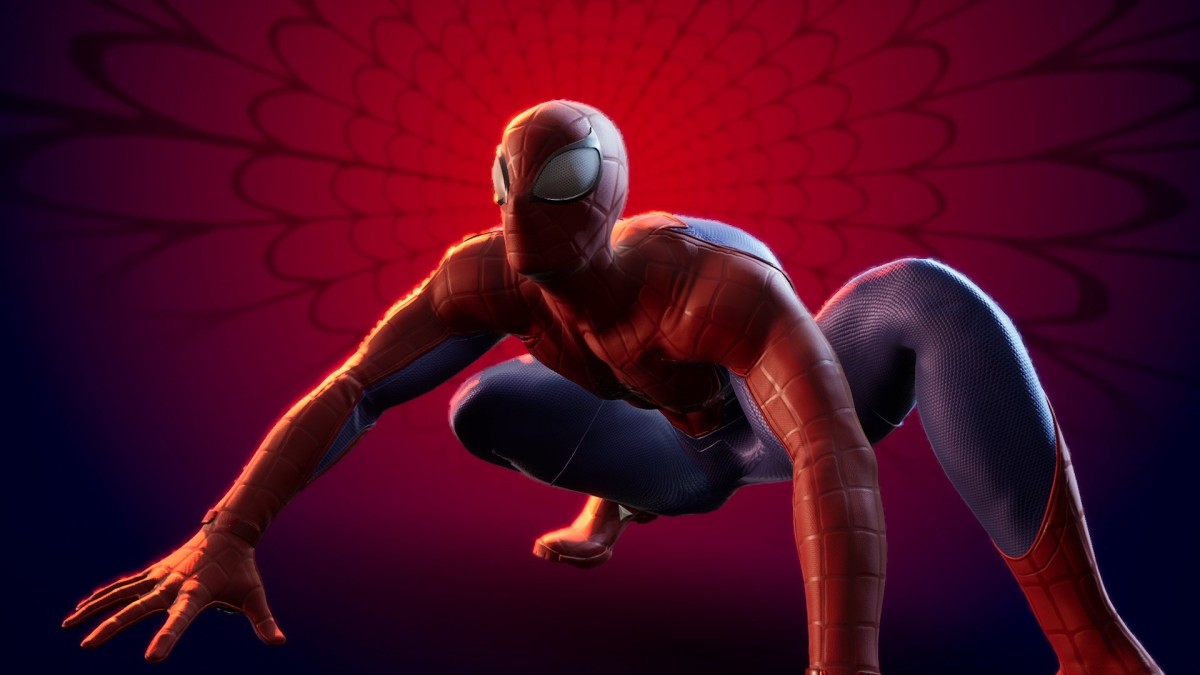
The system comes with its downsides though, as there are no real consequences for never using a hero you don’t like. If they’re required for a story mission, then they’ll automatically be leveled up to the same level as the Hunter (your original player character). While they may be lacking in more powerful abilities, you won’t struggle if you leave one or two heroes on the sidelines for the whole game.
In fact, you probably won’t struggle much at all in this game. The combat has plenty of strategic depth, but I can’t say I ever felt especially challenged by it. The big boss battles pose a decent threat in the early game, but once you’ve settled into the rhythm and have a good feel for each hero, it’s rare you’ll be put in a tight spot.
This isn’t helped by the fact that when you first boot up the game, hard difficulty is locked. By default, you only have access to normal or easy. You can unlock the harder difficulty modes (of which there are several) quite quickly, but it’s a frustrating decision.
That said, while the gameplay isn’t especially difficult, it is a lot of fun. Every battle takes place in a fairly small area, with a mixture of enemies that die in one hit and those that have full health bars. There are plenty of different cards and effects you can deploy, but the main aim in battle is to build up “Heroism” points by using other cards that you can then spend on your most powerful abilities.
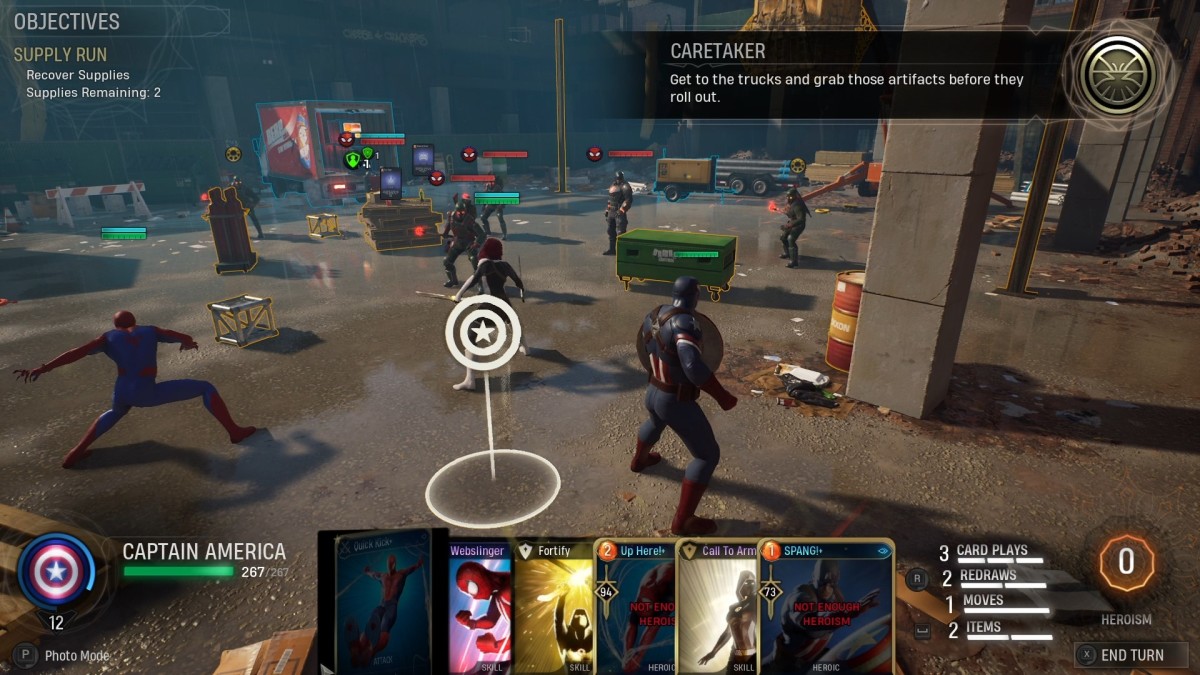
With 12 different heroes and only being able to take three on each mission, you’re going to quickly discover lots of interesting ways in which abilities combo up, and your priorities are constantly shifting. Each turn feels different due to the wide variety of cards you have available, and trying to clear out as many enemies as possible while making progress toward your objective requires a fair bit of thought, especially as you can only play three cards each turn by default.
This balance is different for each mission, shifting wildly depending on which heroes you bring, and what your objective is. You might be looking to destroy or protect an object as increasingly powerful waves of enemies appear, recovering an artifact before it’s taken away, or arresting a Hydra agent as a small army attempts to rescue them.
Despite going through so many of these generic missions, I never got tired of them, which speaks volumes about how engaging the combat truly is.
The only real negative in this department is the lack of enemy variety. Generic Hydra goons aren’t that fun to fight, and even the unique elite units get rolled out so often you learn how to deal with each of them very quickly. The most exciting missions are the ones where the “Fallen” enemies appear, which are corrupted versions of supervillains and heroes. That suddenly turns a battle on its head, but it doesn’t happen often enough.
However, combat isn’t all there is to this game, as there’s a surprisingly large amount to do off the battlefield.
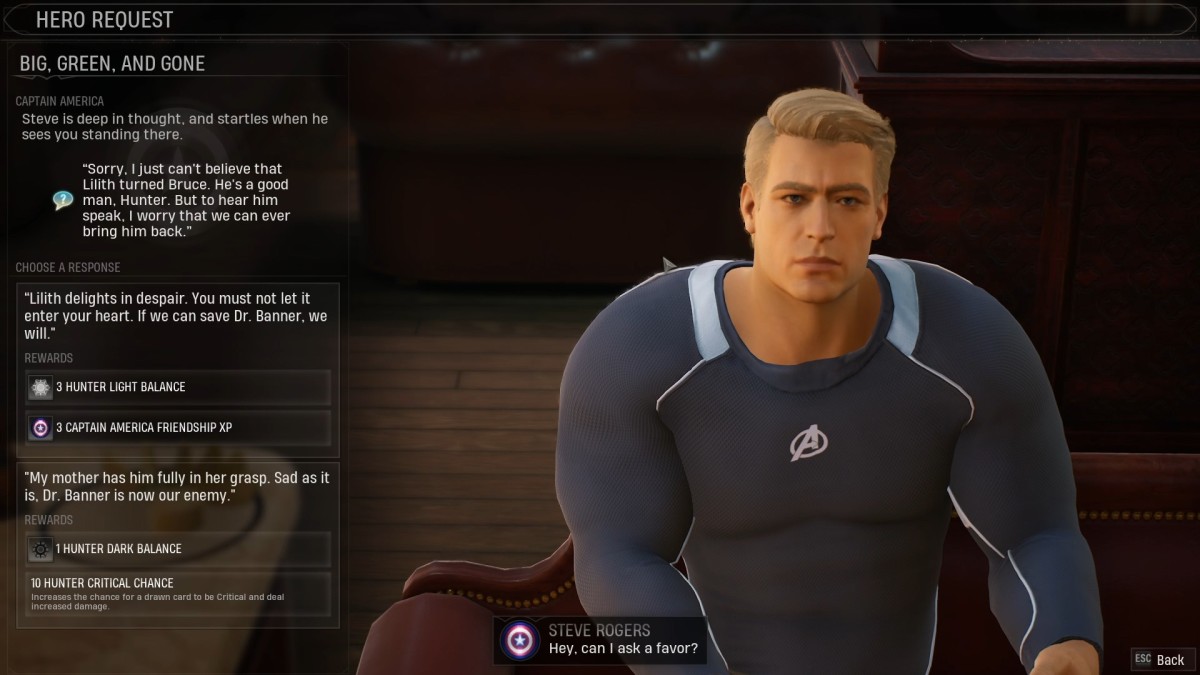
Firstly, there’s a Fire Emblem-style friendship system, where you can bond with your teammates and become close friends for unique combat rewards. This means you’ll spend a lot of time interacting with the characters, which is often less fun than it should be.
You’ll encounter characters like Blade or Nico Minoru who have likable personalities and interesting backstories to dive into. Then you’ll deal with a character like Tony Stark, who is just a pathetic shadow of the MCU version of the character, with fumbling comedic dialogue and a voice actor doing a sub-par impression of Robert Downey Jr.
The characters who have little to no presence in the MCU right now are by far the best ones in the game, and I don’t think that’s a coincidence. It’s the same problem as every other Marvel video game, to be fair, where these characters have a very solidly defined look and feel, so writers can’t stray from that too much, even when it doesn’t work.
That said, I enjoyed spending time with these characters overall. You get more of a chilled-out look that a movie can’t give you and it creates a strong sense of teamwork and camaraderie between your crew.
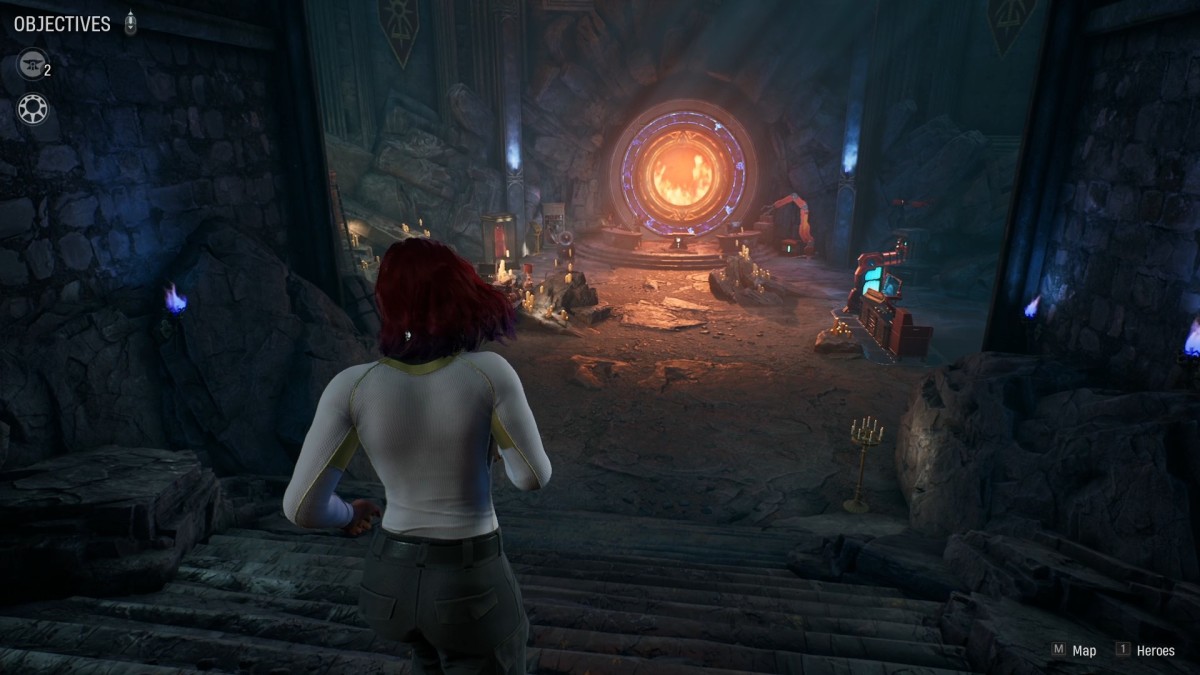
Then there are all the different ways you can upgrade your facilities. You can train with heroes, send them on solo missions, research new tech, craft new abilities – the list goes on. It’s everything you’d expect from a game like this, and each system feeds into another. You’ll find yourself bouncing from one to the next regularly.
That’s still not all though, as the Abbey where you make your base has expansive grounds that are filled with little puzzles and mysteries for you to solve. You’ll get more overworld abilities as you progress that slowly opens up more of the Abbey grounds, giving you a deeper insight into the backstory behind the Hunter and the world they grew up in. It won’t occupy that much of your time, but it gives the story a decent level of depth that the main missions don’t take the time to add.
Midnight Suns is hard to put down. I’ve always been a fan of strategy games, and while this doesn’t have as much tactical depth as XCOM, it takes a lot of the overarching concepts in a new direction, making something that feels fresh and exciting. The lack of intricate difficulty may put off a seasoned tactical veteran, but it hit just the right spot for me, and I’m seriously considering giving it another playthrough already.
Score: 9/10
Version tested: PC
